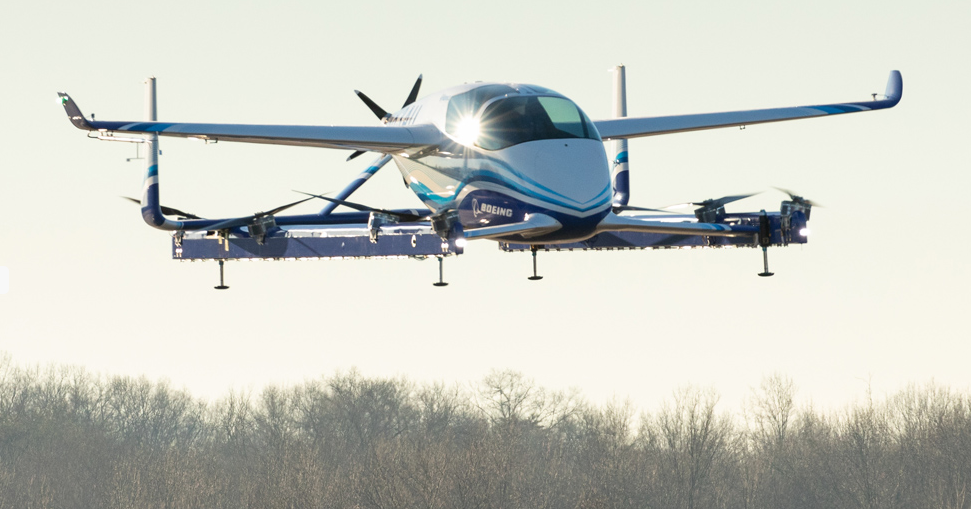A prototype of the autonomous PAV developed by Boeing subsidiary Aurora Flight Sciences made a successful first flight on 22nd February.
Boeing successfully completed the first test flight of its autonomous passenger air vehicle (PAV) prototype on 22nd February in Manassas, Virginia. Boeing NeXt, which leads the company's urban air mobility efforts, utilized Boeing subsidiary Aurora Flight Sciences to design and develop the electric vertical takeoff and landing (eVTOL) aircraft aimed at the on-demand autonomous air transportation market.
The PAV prototype completed a controlled takeoff, hover and landing during the flight, which tested the vehicle's autonomous functions and ground control systems. Future flights will test forward, wing-borne flight, as well as the transition phase between vertical and forward-flight modes. Boeing says the transition phase is typically the most significant engineering challenge for any high-speed VTOL aircraft.
Powered by an electric propulsion system, the PAV prototype is designed for fully autonomous flight from takeoff to landing, with a range of up to 50 miles (80.47 kilometers). Measuring 30 feet (9.14 meters) long and 28 feet (8.53 meters) wide, its advanced airframe integrates the propulsion and wing systems to achieve efficient hover and forward flight.
In addition to the PAV, the Boeing NeXt portfolio includes an unmanned fully electric cargo air vehicle (CAV) designed to transport up to 500 pounds (226.80kg) and other urban, regional and global mobility platforms. The CAV completed its first indoor flight last year and will transition to outdoor flight testing in 2019.
The PAV is one of multiple concepts aimed at the emerging Urban Air Mobility market. A comparable project from Airbus, called Vahana, made its first flight in January 2018.

